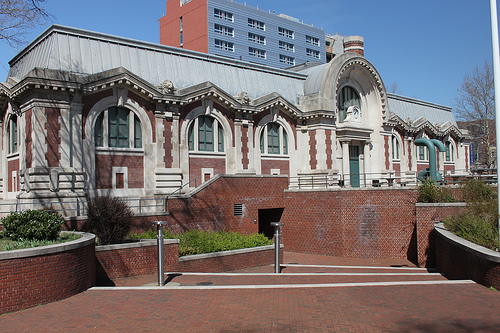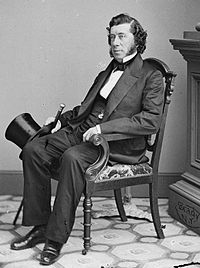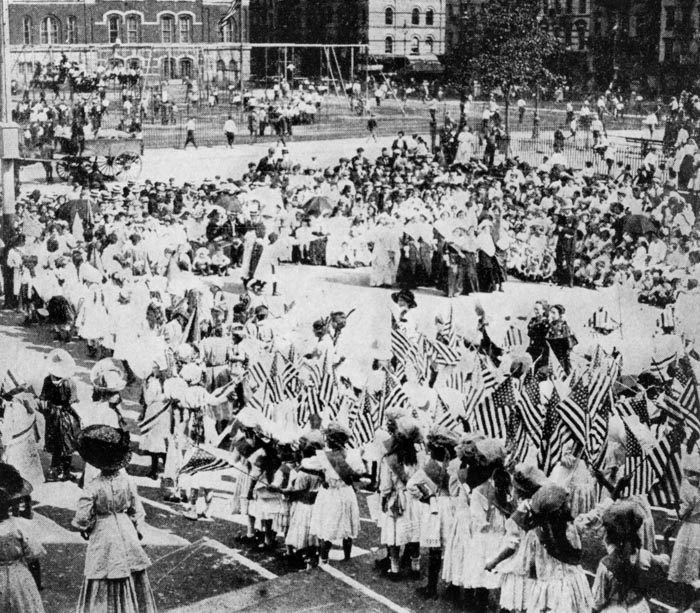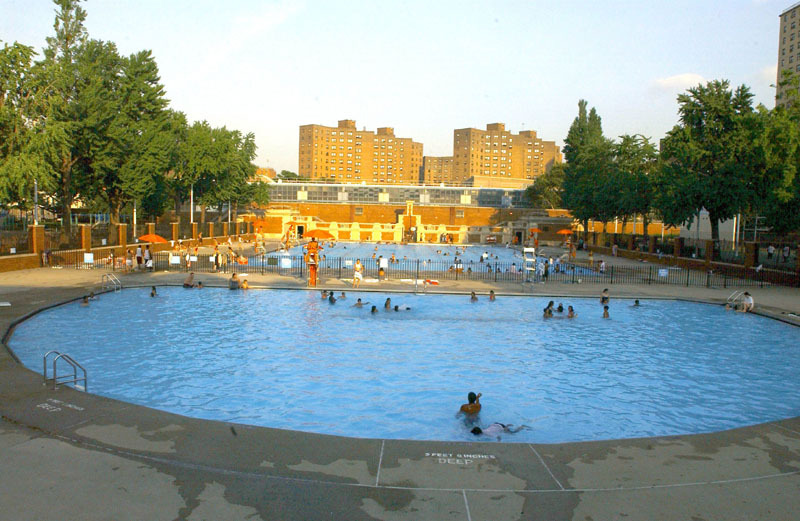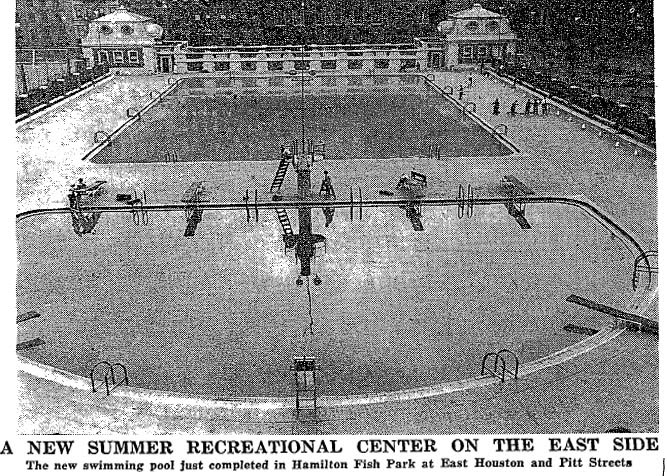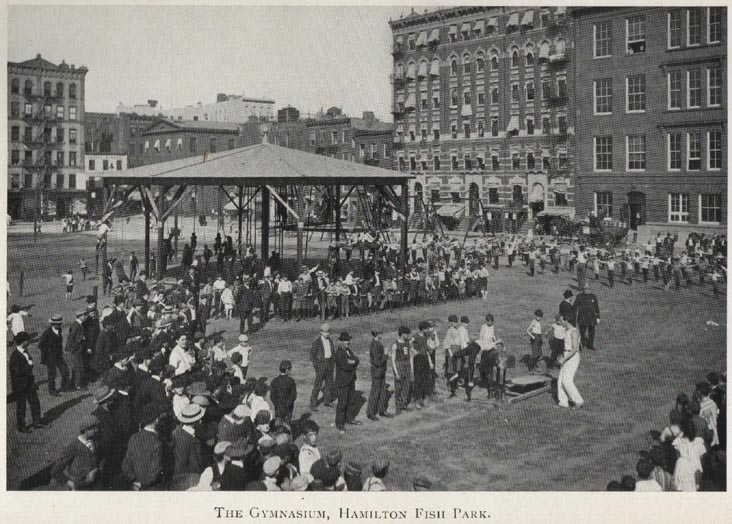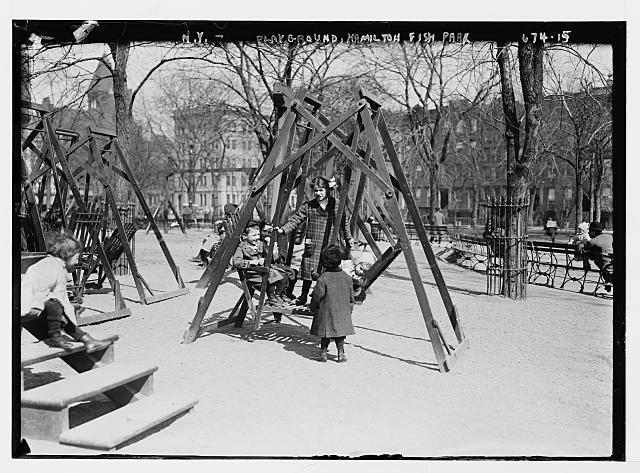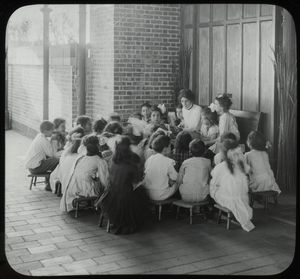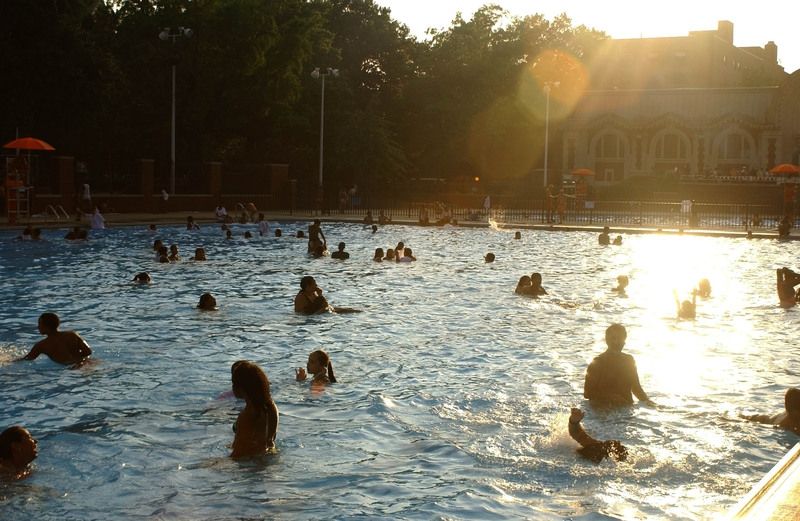Inspired by The LoDown’s post on the opening of the Hamilton Fish Park pool for the season, and in a procrastinatory mood, I started looking up historic pix of the park. I’ve always been a huge fan of its odd and gorgeous little rec center, ever since we went to our pal Maxwell’s 3rd birthday party there.
Is it not the most beautiful little Beaux-Arts structure? We were inside for Maxwell’s party — I believe it was late February, 2005 — and when we came out, a ton of snow had fallen and was still falling hard. With the silence and empty streets and this strange stone building, it felt like being catapulted back in time. I wish I had a picture of the building in the snow. I do not. So here is a picture of Hamilton Fish:
Anyway, the park was built in an area once known as Bone Alley, so named for the horrible mortality rate of those living there. Visit this page to learn more facts.
Bone Alley was bounded by East Houston, Willett, Stanton and Pitt streets. Quoth Wikipedia:
“In 1897 the block contained sixty-three houses, three hundred and sixty-three families, and one thousand six hundred and fifty people. The death rate on the block of Bone Alley was 26.06%, while the death rate in the alley itself was 47.97%. The locale was filthy…Bone Alley was known as the most crowded place on earth.”
From the Parks Department web site:
In 1900 the park, featuring the gymnasium and playground, was completed. The Hamilton Fish Park Gymnasium is among the most notable small civic buildings in New York City. Designed in 1898 by Carrère & Hastings, architects of the New York Public Library on Fifth Avenue, this exuberant Beaux-Arts style structure is the only survivor of the original park plan. The building was designed in the manner of a small garden pavilion inspired by Charles Girault’s Petit Palais in Paris. Behind the gymnasium was a pair of small sculpted water fountains and grass parterres, benches and trees, all arranged in straight rows to emphasize the formality of the park.
Only three years after its opening, the park was redesigned to accommodate more active outdoor recreation such as track and tennis. In 1936 it was overhauled once again, this time featuring swimming as the main attraction. Constructed by the Works Progress Administration, the pool at Hamilton Fish Park was one of eleven that opened throughout New York City in a single summer during the Great Depression. The influence of the pools extended through entire communities, attracting neighborhood children and aspiring athletes and changing the way millions of New Yorkers spent their leisure time. Among the most remarkable public recreational facilities in the country, the pools represented the forefront of design and technology. Hamilton Fish Pool was so highly regarded that the U.S. Olympic Team used it for practice sessions on their way to the 1952 Helsinki Games.
Here’s a pic from July 1, 1911, showing girls participating in “The Parade of the States†festival in the park. According to the New York City Parks Department, participants “[embodied] the songs and dances and costumes in vogue in the various sections of our land.†Every playground in the city was assigned a region of the country to pay tribute to.
“The entire press of the City commended this work as morally, socially, and geographically instructive,†said the Recreation Supervisor for the parks, William Lee. “It was given wide publicity with photographs, and fully seven to eight thousand children and parents witnessed this very excellent performance.†Pretty impressive, given that the Bureau of Recreation was only established the year before.
Back to today. Maxie (age 6) loves the pool, where she takes swim classes. Not only is it humungous, it has a really giant unscary shallow section.
Looks just as it did when it opened in 1936, no? Except for the diving boards. No diving in these litigious times.
The delightful Knickerbocker Village blog featured a vintage NYT article about the opening of the pool. (The Times pointed out, in its not-at-all-stuffy-or-elitist manner, “This is a densely populated tenement area, and the bathing is expected to prove of wide benefit to both children and adults. It will lessen the attractiveness of the disease-ridden East River and also help to keep children off the streets.”)
And here are some more awesome vintage pix of the park.
Ooh, and look at the lovely reading area on the roof of the Hamilton Fish Park library! There’s been a library next to the park, on the corner of East Houston and Pitt, since 1909, but the original building was demolished in the late ’50s when East Houston was widened.
Wikipedia mentions that there was once a kindergarten in the park, too. I wonder when?
Oy, I gotta go back to work. Happy summer!

